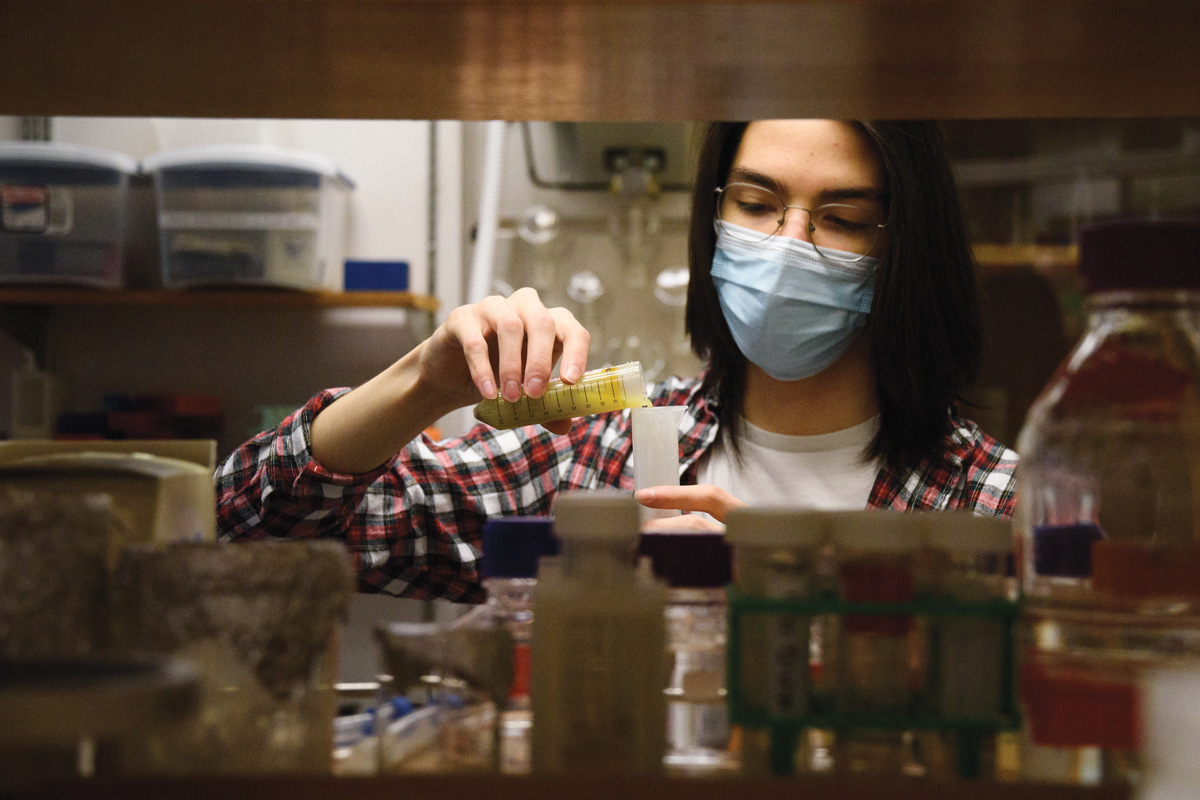Germs that Eat Plastic
Reed biologists are on a quest to unlock the secrets of bacteria that can break down plastic pollution.
Plastic is choking our planet.
Plastic bottles made of polyethylene terephthalate (PET) litter our rivers and pollute our oceans. A plastic gyre twice the size of Texas swirls in the Pacific ocean, where wind and waves ceaselessly grind the stuff into ever-smaller bits.
But there is hope on the horizon. For several years, Prof. Jay Mellies and Reed biology students have been working to recruit a microscopic ally in the war on plastic pollution. They have developed a bacterial stew that is capable of breaking down scraps of PET and eating it.
The stew—technically a consortium—is composed of several strains of bacteria that work together synergistically to consume PET. Over the summer, students investigated several key questions about how the germs pull off this remarkable stunt.
One strain in particular, Pseudomonas 9.2, can do the job on its own (although more efficiently when it works in tandem with other strains). But the genes responsible for this microbial feat remain unknown. BMB major Riyaz Ditter ’22 set out to hunt them down.
The first step was to look at the genes involved in hydrolyzation—the chemical process by which the bacteria chops long strands of PET into shorter, digestible chunks—and identify potential candidates. The next step was to create knockout mutants—that is, strains of bacteria with one of the suspect genes stripped out. Finally Riyaz fed the mutants some tasty plastic to see if the missing genes robbed them of their ability to degrade it.
Each step in the process proved trickier than anticipated. Nonetheless, the research identified three promising candidate genes that may play a role in digesting PET.
Deepika Shingwekar ’24 took a different tack. She investigated whether softening up PET with chemicals would help the consortium break it down faster. Working with 7 forms of PET (pellets, shreds, film, and so on) she found that pretreating the plastic with sodium hydroxide or hydrogen peroxide made it more digestible to the bacteria and hastened its degradation.
Tags: Academics, Climate, Sustainability, Environmental, Research
